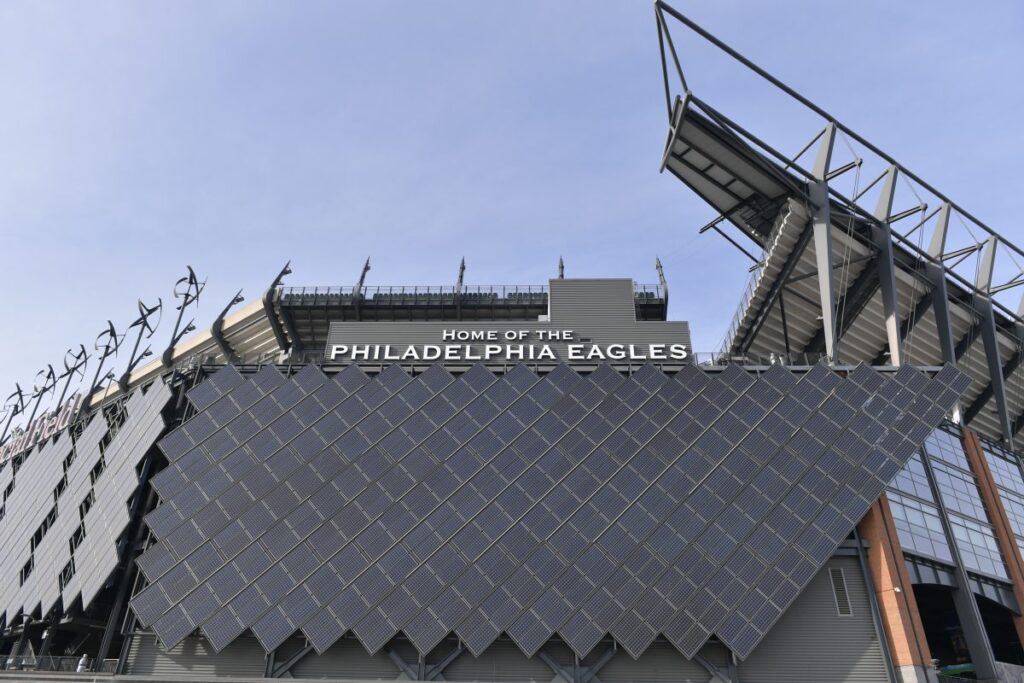Solar in the NFL

As we enter Super Bowl weekend, we look at how the National Football League adopts solar.

This weekend, Super Bowl LVI takes place between the Los Angeles Rams and the Cincinnati Bengals at the SoFi stadium in Los Angeles, California.
The stadium, which was opened in 2020, is a $5 billion modern marvel with a beautiful, paneled, light-transmitting roof. It looks like the perfect place for the design of semi-translucent buildings-integrated photovoltaics (BIPV), but, alas, the stadium has no on-site solar to speak of.

Image: Quest Renewables
SoFi Stadium could take a few notes from the Mercedes-Benz stadium in Atlanta, which played host to Tom Brady’s last Super Bowl win as a New England Patriot. This arena opened in 2017 and its designers found a way to fit solar and energy efficiency into its $1.6 billion construction contract. Mercedes-Benz stadium is LEED Platinum certified, the highest tier of “green” ranking available.
The stadium and surrounding area are topped with 4,000 panels producing more than 1.6 million kilowatt-hours of electricity each year. The Solar Energy Industries Association (SEIA) said this is enough for the Atlanta Falcons to power their gameday operations all year and have energy to spare. Local installers Hannah Solar and Radiance Energy were hired for the PV projects.
Top commendations go to the Philadelphia Eagles’ Lincoln Financial Field. About one third of the stadium’s annual use is met by its on-site solar installations which feature 11,000 panels and a capacity of 3MW. The stadium integrates panels in its side, and solar carports keep Eagles fans dry while they tailgate.
This author would also like to tip his cap to the New England Patriots, which signed on with ENEL Green Power to purchase 900,000 kWh of renewable energy credits. The credits add on to the Patriots’ onsite solar arrays, one of the first to be procured by an NFL team. Nearby, on the Patriots Place shopping center, a 525-kW system of 2,556 panels powers about 30% of its operations.

Image: ENEL
Interestingly, in 2020 Gillette Stadium found itself another alternative energy partner, fuel cell maker Bloom Energy. The Kraft organization commissioned Bloom to build a 2MW fuel cell server, which supplies nearly 50% of the stadium’s needs. The servers are installed in a microgrid-ready configuration.
Though this weekend’s Super Bowl won’t be solar powered, more stadiums integrate PV each year. Perhaps there is still hope SoFi stadium can add solar energy to its sparkling new roof one day.
From: https://pv-magazine-usa.com/2022/02/11/solar-in-the-nfl/

